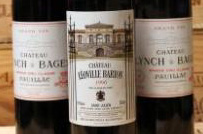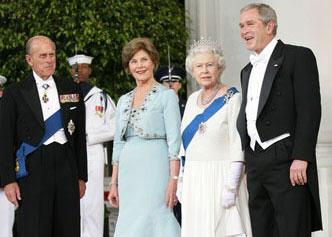Dr Vino's wine blog
wine talk that goes down easy
Playboy wine, Irish cellar, Georgia, Napa – tasting sized pours
They read it for the articles
Playboy had a launch party last week in Shenzhen for some wines they will launch on the Chinese marketplace. The wines may not be valued for what’s inside the bottle since “Playboy wine can enter China market quickly by wide international influence of Playboy brand.” No label image available. [CWIW; via wineconsultant]
 Drink me, I’m Irish
Drink me, I’m Irish
If you had a $40,000 a year wine buying budget and a cellar filled with 1,500 bottles, who might you be? Why, Ireland’s Department of Foreign Affairs! They’re not outrageous ranging from 10 to slightly over 100 euros in current value with the oldest vintage a 1982. Many of the properties represented have Irish connections, such as the obscure Chateau Vignelaure in Provence, which is owned by David O’Brien. Chateau Kirwan and Leoville-Barton feature in the cellar logs, even if their Irish connections were 200 years ago. [independent.ie]
Napa exists!
We might not be able to make new “champagne” brands any more in America, but now Europeans can’t make “Napa.” Take that! [NVR]
Not THAT Georgia
“Want to try Georgian wine?” Mamuka Tsereteli booms, holding out a plastic cup. Seeing a blank look, he helpfully adds, “Caucasus mountains?” Selling Georgian wine in America. [WaPo]
Bottle age
Two Buck Chuck does what none of its wine could do: turns five years old. [AP]
How sweet it isn’t
Mariann Fischer-Boel, the reformist EU Commissioner of Agriculture, has taken aim at Southern European wine producers with the threat of uprooting vines and reducing subsidies. Now she takes aim at Northern Europeans with a potential ban on chaptilization, a method of adding sugar to wine. [J. Ro]
Survey says: wine is the new black
“Wine is the new black.” So I said recently (and was quoted in the NY Sun) at a conference discussing wine and the “youth market” (roughly 21- 25 year olds, aka “millennials”). Even though I’m a Gen Xer, someone felt I was still young enough to qualify and offer some perspective on younger drinkers
Wine is trendy for younger people (stretching “young” to a generous under 40), particularly young, urban professionals. There’s a huge thirst for wine knowledge in this demographic.
But just what them there “youts” want in wine and how they learn about it is an open question for wine marketers. Vinexpo, the French trade show organizers, surveyed a few of the youngest, legal wine drinkers in a variety of countries. Their sample size per country was very small and the findings were not really eye-opening and as Peter Hellman points out in the NY Sun story.
 What I found much more interesting were the results of an informal survey of 181 Columbia Business School students conducted by the indefatigable Philippe Newlin, Tasting Director at Wine & Spirits magazine and wine instructor at Columbia. Two-thirds of those responding to this survey were between 26 and 30, so slightly older than the “millennials” but an interesting group nonetheless given their relative youth and future earning power.
What I found much more interesting were the results of an informal survey of 181 Columbia Business School students conducted by the indefatigable Philippe Newlin, Tasting Director at Wine & Spirits magazine and wine instructor at Columbia. Two-thirds of those responding to this survey were between 26 and 30, so slightly older than the “millennials” but an interesting group nonetheless given their relative youth and future earning power.
Here are some of the take aways from the survey:
* Image: 86% of respondents felt wine had an image that was “Sophisticated†versus “Cool & trendy“ (5%) or “Snobbish/Elitist“ (5%).
* Health: While the majority agreed that wine is a healthier choice, 65% of those surveyed agreed that health concerns do not impact their choice to drink wine.
* Frequency: 65% of respondents drinking wine 2 – 4 times per week or more (only 6 % for an every day glass of vino).
* Recommendations from friends were another significant factor in the group’s wine purchases.
* Social: 39% of those surveyed rank restaurants as the their primary venue for drinking wine, followed by groups and social settings.
* Grape varieties were the first thing on the label 35% of respondents look for when buying wine, followed by country of origin and price. Interestingly, brand was important for only 2%.
* Average spend per bottle is rising for the group versus two years ago with bottles priced between $15 – 20 now out pacing $10 – 15 as the biggest category of expenditure
* Edu-ma-cation: 61% believed they would drink more wine if they knew more about wine in general
I tool a quick survey of participants in my NYU classes and the majority said that most recommendations come from friends and family. That signals a possible generational shift, away from critics that consumers will never meet and toward a more social form of wine recommendations with the possibility for feedback. Did you like a wine? Share it with a friend. Or not like it? Tell a friend to steer clear. Like a blog it makes wine more contingent, subjective and fodder for discussion. I’ll drink to that.
Where you do get your wine recommendations from?
Click here for the executive summary of Philippe Newlin’s study.
Which wine would you pour if the Queen were coming for dinner?

The question of which wine to serve the Queen is not one that arises in Washington very often. But last night it did at the state dinner for 130 honored guests. The Teetotaler-in-Chief went with an all-domestic–nay, Napatastic!–youthful, line-up (though somehow a “Champagne” dressing appeared on the salad).
Straight from the White House, last night’s menu:
Spring Pea Soup with Fernleaf Lavender
Chive Pizzelle with American Caviar
Newton Chardonnay “Unfiltered†2004 (find this wine)
Dover Sole Almondine
Roasted Artichokes, Pequillo Peppers and Olives
Saddle of Spring Lamb
Chanterelle Sauce
Fricassee of Baby Vegetables
Peter Michael “Les Pavots†2003 (find this wine)
Arugula, Savannah Mustard and Mint Romaine
Champagne Dressing and Trio of Farmhouse Cheeses
“Rose Blossomsâ€
Schramsberg Brut Rosé 2004 (find this wine)
Getting plowed: Sonoma forests to vineyards
In last week’s posting about the carbon footprint of wine, I intentionally just focused on the often overlooked and carbon-intensive distribution aspects. But certainly the vineyard and winery practices need to be considered as well when looking at the environmental impact of wine.
No practice might have more impact on the environment than the act of making a vineyard out of forest. A four-minute film from the Sierra Club (thanks, Jack!) demonstrates some of this deforestation/vineyard construction in Sonoma. Using images from Google Earth, they document some vineyards already carved out of forests. Then they discuss the Premier Pacific Vineyard’s proposed development of close to 2,000 acres of forest land for 90-acre “vineyard estates,” or residences set among the vines.
On their website, Premier Pacific has a statement of environmental responsibility and commitment to sustainability:
Premier Pacific appreciates its unique opportunity to help protect the environment. We take our mandate as a responsible steward of the land seriously and have invested considerable time and resources toward designing each vineyard to be as sustainable and low impact as possible…Sustainable practices are not just environmentally responsible, but less intrusive, more natural vineyard management techniques that are being recognized as an important part of growing luxury wine.
Check out the video clip (click here if the above does not work) and feel free to sound off in the comments.
Related: ” Sonoma Coast winemakers living on the edge” [NYT]
Cameron Hughes, a bird on the back of a hippo
One of the oldest and most dubious sales pitches in the wine trade might be “this wine comes from the vineyard right next to [insert prestigious winery name here]. Similar quality, a fraction of the price.”
Uh huh.
So it was with my eyebrow duly raised that I met with Cameron Hughes. He lures Costco shoppers down the aisle to try his wine by telling them that he’s got a “$30 wine for $9.99.†Based on some rhapsodic reviews of his wines on wine web sites, the claim sounded plausible enough to lure me to meet with him for a coffee one morning on his recent trip to New York City.
Hughes is not a wine maker. He is part wine finder, part marketer, and and part salesman. And he’s introducing an innovative way of making and selling wine that is delivering cost-savings to consumers in the form of some easy-drinking, value vino. Read more…
Seeing green and being green
Eric Asimov fires off a “green wine” column for his first post-Earth Day (NYT).
One thing that struck me from the column–and that I have often encountered among many “green” producers–is their reluctance to put their method front-and-center, hoping to let the wines be appreciated on their own merits first, then as “green” wines second.
That happened last night in my NYU class when I poured the Porter Creek, Fiona’s Vineyard, 2004, a certified organic, transitioning-to-biodynamic pinot noir from Sonoma’s Russian River Valley. The wine was almost unanimously loved (find this wine). After I said that it was made organically and almost biodynamically, one participant said “why don’t they put that on the label?”
It seems there are two poles of along an axis of motivations for making green wine. On the one extreme, some producers are doing it because it’s makes good wine (and is good for the Earth). On the other, some may be doing it doing it because the sales and marketing department told them to. Or there might be a bit of both for all involved. It seems Porter Creek is on the good wine/Earth side since they don’t advertise it on their labels.
How about Fetzer with their huge Bonterra brand? I was intrigued to note on Monday here that they will be spending $1 million on marketing their wine, which states “made with organically grown grapes” on the label. Hmm, seems to have a whiff of marketing, not the terroir.
 (Incidentally, “made with organically grown grapes” need only have a minimum of 70 percent organic grapes. Truthiness?)
(Incidentally, “made with organically grown grapes” need only have a minimum of 70 percent organic grapes. Truthiness?)
Related: “Red, White and Green: can you taste the difference?” [University of Chicago, May 12]
Poll: should the US drinking age be lowered?
John McCardell is not exactly the face you would expect to be making an issue of lowering the drinking age in the US. But he is becoming the issue’s poster child.
McCardell, the president emeritus of Middlebury College, is described as having “gray hair, gray suit, soft voice” in an provocative piece on the subject by George Will in the WaPo. Quote:
McCardell thinks that, on campuses, a drinking age of 21 infantilizes students, encouraging immature behavior with alcohol and disrespect for law generally. Furthermore, an “enforcement only” policy makes school administrations adversaries of students and interferes with their attempts to acquaint students with pertinent information, such as the neurological effects of alcohol on young brains. He notes that 18-year-olds have a right to marry, adopt children, serve as legal guardians for minors and purchase firearms from authorized dealers, and are trusted with the vote and military responsibilities. So, he says, it is not unreasonable to think that they can, with proper preparation, be trusted to drink.
So what do you think? Have your say with the new polling software!

poll now closed
Reader mailbag: how’s North Carolina for wine?
Dear Dr. Vino,
I may soon be transfered from Chicago to North Carolina for work. While there are lots of factors involved in a move, not an insignificant one for me is the wine. Does NC have reciprocal shipping? Could I still order from Sam’s?
-Wino on the move
Glad to see that you have your priorities straight–and you are in luck!
It turns out that North Carolina does have direct shipping. Since October 1, 2003 residents have had the right to order wine directly from wineries at the rate of two cases a month–almost a bottle a day! Those wineries can be either in-state or out-of-state, laws that conformed with the current legal environment two years before the Supreme Court decision in the case Granholm v. Heald was handed down. The only catch is that the winery has to have a license to ship on file with NC so check first and encourage them to apply for one if they don’t have one already.
I called Sam’s for you and they do ship to North Carolina. By the way, consider yourself lucky in this regard. Even though NC allows direct shipping by wineries, even in the post-Granholm era, you can’t take it for granted that shops will ship too (see my previous frustration with this here). Indeed, Sam’s doesn’t ship to me in New York, also a reciprocal state. When I asked why, one of the owners emailed me that the decision is based on the advice of their attorneys. Those darned attorneys…grrr
And don’t forget the local options you have in North Carolina. NCwine.org boasts that the state is 10th in grape production and 12th in wine production!




